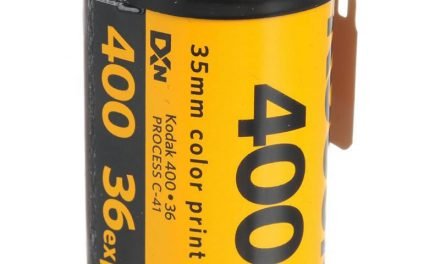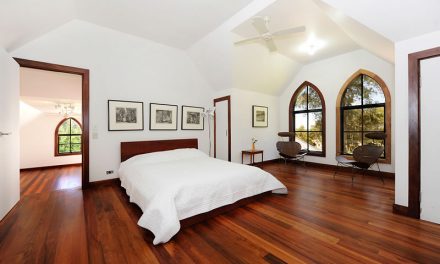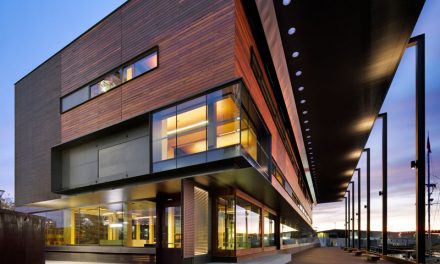The customer’s expectations and knowledge of the underfloor heating system’s operational and installation specifications are particularly important in assisting the flooring to and recommend the correct products and procedure for the anticipated timber floor project.
All too often, the installer has no contact with the end user of the flooring, but is engaged by a builder or specifier. As a result, it is not uncommon for issues regarding under-slab heating to be ignored or forgotten.
Australian/New Zealand Standard AS/NZS 2455.1:1995 covers pre-installation requirements, and more importantly, section 2.3 covers exchange of information, a requirement often neglected by project managers throughout the flooring industry.
The first step for the flooring contractor is to confirm that the heating coils are set, so as not to cause hot spots, at a minimum depth of 50 mm. An individual thermostat should
be placed for every 50 square metres of slab. This should be considered when choosing fixings for installations on battens, or when laying ply underlay, as the wrong specification may damage the heating system.
When it comes to installing traditional floor boards over subfloor heating, the process becomes somewhat more complicated as many factors need to be considered. Here, the need for the exchange of information, advising that there is a heating system installed throughout the slab, is critical.
The timber supplier should be consulted when ordering timber for installation over a heated sub straight. As a rule, flooring timbers are supplied with a moisture content between 9 per cent and 14 per cent, while timbers supplied for installation over a heated subfloor must hold a moisture content between 8 and 9 per cent.
The manufacturers of the intended moisture barrier, adhesive, and coating should also be consulted to ensure their products are fit for purpose (remember to use moisture barriers and adhesive from the same manufactures to guarantee compatibility).
Prior to the installation, the heating system should be turned on and the temperature gradually increased over a two-week period – until it reaches its normal operating range (usually between 21 and 23°C). The temperature should then be kept on constantly for an additional two weeks, so the timber can be acclimatised in conjunction with the subfloor acclimatisation.
At least 48 hours prior to installation the heating should be completely turned off, and the slab left to cool, so that any condensation can dissipate.
Once the flooring is installed the heating system should remain off for at least seven days to allow the adhesive to cure, after which the heating system should be turned on and the temperature increased gradually over seven days – until it reaches its normal operating temperature. The heating should remain in operation for a minimum of 14 days. Then a minimum of 48 hours must elapse after the heating is turned off, and prior to commencing the sanding and finishing process.
Now comes the complex part. The four elements that will determine whether an installation will be successful are the timber, moisture barrier, adhesive, and coating system. The literature pertaining to the application of vapour barriers over heated slabs is scarce (perhaps this is because a barrier is deemed unnecessary over a heated slab), although I would advise consulting the manufacturer regarding their specification, as the ones I have spoken to regarding this article all suggest that a moisture barrier is essential.
It’s also worth noting that adhesives used to stick down timber flooring have recommended high-temperature limits before they are compromised and affect their performance in-service.
When it comes to narrow timber boards (e.g. 85×19 mm), they are more suited for installation over heated subfloors than wide boards, as they are more stable. Shrinkage is reflected as a percentage of the width of the board (e.g. 1 per cent shrinkage of a
80 mm wide board is less noticeable than
1 per cent of a 130 mm wide board).
Tip: Some timber types that do not react well to heat are Kempas, Beech and Maple.
Australian Standard, AS 4786.2- 2005: Part 2 – Sanding and finishing A2.8 Heated concrete slabs states that, “Procedures can be found in industry literature to cover sanding and finishing of timber floors on heated slabs. They are not included here as they were considered too specific to apply to all situations”.
Given the influence coating materials are known to have on flooring movement, when choosing a finish for timbers installed over heated slabs flexible oil-based finishes are good options.
Underfloor heating has much the same effect on timber flooring as long-term exposure to air conditioning does. Prolonged exposure to evaporative air conditioning will place humidity into the atmosphere, leading to the possible expansion of timber flooring, while refrigerated air conditioning will remove humidity from the atmosphere, causing the timber to contract. Similarly, long exposure to under slab heating will dry timber flooring and place extra stress on the timber, vapour barrier, adhesive, and coating.
Once the floor is in service the heating system should never exceed 27c. The heating should never be turned from zero to the desired temperature in one step, instead, it should only be turned up gradually – or per the manufacturer’s instructions.
Even when applying the best work practices, it is wise to formalise the transfer of responsibility to the final user of the floor.
A disclaimer such as the example below is sufficient. When transferring the responsibility to the client, for the use of the floor in service, it is wise to provide some specific information regarding the maintenance and future use of the floor. This includes the consideration of using rugs; rugs are a popular accessory, but may cause hot spots within the floor and localise timber shrinkage.
DISCLAIMER EXAMPLE: UNDERFLOOR HEATING
Your timber flooring will be installed to industry standards and in accordance with the manufacturer’s instructions regarding underfloor heating. However, we have no control over the future employ of the heating system and what influence it will have on the dimensional stability of the flooring. It is therefore vital that you follow the implicit instructions regarding timber flooring and underfloor heating.
As part of our duty of care we supply the relevant information regarding the installation and after-care of timber flooring and underfloor heating systems










